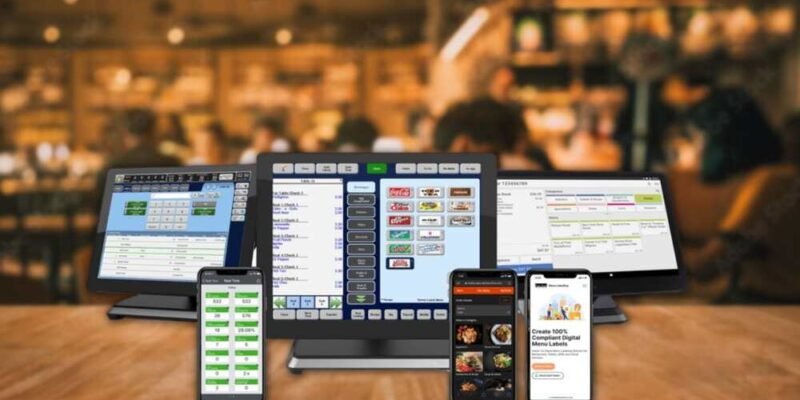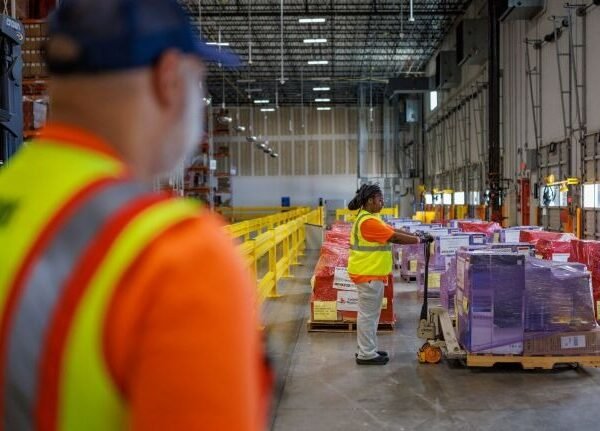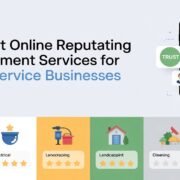In today’s fast-paced and ever-evolving food industry, staying ahead of the competition requires more than serving great food. It demands operational efficiency, seamless customer service, and precise management of resources. One of the most transformative tools that modern restaurants have embraced is Restaurant Management Software (RMS). This technology has revolutionized how restaurants operate, offering many benefits beyond basic point-of-sale functions. In this comprehensive guide, we will explore the importance of Restaurant Management Software, its key features, and how it can significantly enhance the efficiency and success of any restaurant.
Understanding Restaurant Management Software
Restaurant Management Software is a specialized application designed to streamline various aspects of restaurant operations. It integrates several functions into one cohesive system, allowing restaurant owners and managers to oversee and control all facets of their business from a single platform. Whether searching for the online best restaurant Management software or simply looking to enhance your operations, RMS provides the tools to optimize every restaurant’s operation, from inventory and order processing to employee scheduling and customer relationship management.
The evolution of RMS has seen it grow from simple billing systems into sophisticated platforms that offer real-time analytics, mobile accessibility, and cloud-based storage. These advancements mean that modern Restaurant Management Software can adapt to the unique needs of different types of restaurants, whether a small café, a mid-sized family restaurant, or a large-scale chain.
Key Features of Restaurant Management Software
To understand how Restaurant Management Software can maximize efficiency, it is essential to look at some of its key features:
Point of Sale (POS) Integration
At the heart of any RMS is the point-of-sale system (POS). A modern POS is more than just a cash register; it is a hub for processing payments, tracking sales, and managing orders. With integrated POS capabilities, RMS can streamline the order-taking process, reduce errors, and speed up transactions. It also allows for different payment methods, including cash, credit cards, and mobile payments, ensuring a smooth customer and staff experience.
Inventory Management
Efficient inventory management is crucial for reducing waste, managing costs, and ensuring the kitchen is always stocked with the necessary ingredients. RMS provides real-time tracking of inventory levels, automatically updating as orders are placed and supplies are used. This feature helps managers maintain optimal stock levels, forecast future needs, and avoid overordering or underordering, which can lead to lost sales or unnecessary waste.
Employee Scheduling and Management
Managing staff schedules can be time-consuming, particularly in a busy restaurant. RMS includes employee scheduling tools that allow managers to easily create, modify, and communicate schedules. It also tracks employee attendance, hours worked, and performance, providing valuable insights into labor costs and productivity. By automating these processes, restaurants can reduce administrative overhead and ensure they are staffed appropriately during peak and off-peak hours.
Customer Relationship Management (CRM)
Building strong customer relationships is key to ensuring repeat business and fostering loyalty. RMS often includes CRM features that allow restaurants to collect and analyze customer data, track preferences, and personalize marketing efforts. This data can be used to create targeted promotions, loyalty programs, and personalized dining experiences that cater to the specific tastes and preferences of the customer base.
Order Management and Kitchen Display Systems (KDS)
Order management is another critical area where RMS can significantly improve efficiency. With integrated order management systems, orders placed at the table, through a mobile app, or online are instantly communicated to the kitchen via Kitchen Display Systems (KDS). This reduces the chances of order mix-ups, speeds up food preparation, and ensures that all orders are fulfilled promptly and accurately.
Reporting and Analytics
Data-driven decision-making is essential for any business looking to improve its operations and profitability. RMS provides comprehensive reporting and analytics tools that offer insights into sales trends, customer behavior, inventory levels, and employee performance. By analyzing this data, restaurant managers can make informed decisions about menu adjustments, pricing strategies, staffing, and other operational aspects. These insights can lead to more effective business strategies and improved financial performance.
Mobile and Cloud Accessibility
Accessing restaurant data from anywhere is a significant advantage in today’s mobile-driven world. Many modern RMS platforms offer cloud-based solutions that allow managers to monitor and control operations remotely. This flexibility is especially beneficial for restaurant owners who manage multiple locations, as it enables them to stay connected to each site and make real-time decisions from their mobile devices or laptops.
The Benefits of Implementing Restaurant Management Software
Now that we have explored the key features of RMS, let’s examine the specific benefits these systems offer restaurants.
Improved Efficiency and Productivity
By automating routine tasks and streamlining operations, RMS allows restaurant staff to focus on delivering exceptional customer service. For example, with automated order processing and inventory management, employees spend less time on manual data entry and more time attending to customers. This increased efficiency can lead to faster table turnover, reduced wait times, and higher customer satisfaction.
Enhanced Accuracy and Reduced Errors
Manual processes are prone to human error, leading to incorrect orders, billing mistakes, and inventory discrepancies. RMS minimizes these errors by automating data entry and calculations, ensuring that orders are accurately recorded and processed. This accuracy improves the customer experience and reduces the likelihood of revenue loss due to mistakes.
Cost Savings
Effective inventory management and labor scheduling are critical for controlling costs in a restaurant. RMS helps to reduce food waste by providing accurate inventory tracking and forecasting, ensuring that ingredients are used efficiently. Additionally, by optimizing staff schedules based on data-driven insights, restaurants can avoid overstaffing or understaffing, thereby reducing labor costs.
Better Customer Experience
A positive customer experience is crucial for retaining patrons and generating repeat business. RMS enhances the customer experience by enabling faster service, personalized interactions, and seamless payment processes. Features like CRM and loyalty programs further strengthen customer relationships, encouraging them to return to the restaurant.
Scalability
As a restaurant grows, its operational needs become more complex. RMS is designed to scale with the business, offering the flexibility to add new features, integrate with other systems, and manage multiple locations. This scalability ensures that the software remains effective and relevant as the restaurant expands, avoiding the need for frequent software replacements.
Informed Decision-Making
The reporting and analytics tools RMS provides give restaurant owners and managers access valuable data that can inform strategic decisions. Whether adjusting menu items based on sales trends, implementing targeted marketing campaigns, or optimizing labor costs, RMS provides the insights needed to make informed choices that drive business success.
Challenges of Implementing Restaurant Management Software
While RMS has significant benefits, it is essential to acknowledge some of the challenges that restaurants may face when implementing this technology.
Initial Cost and Training
The initial cost of purchasing and implementing RMS can be a significant investment, particularly for smaller restaurants. Additionally, staff may require training to use the new system effectively, which can temporarily disrupt operations. However, many restaurants find that the long-term benefits far outweigh the initial costs, similar to how businesses in the travel industry invest in online travel booking software to enhance efficiency and improve customer service.
Integration with Existing Systems
Integrating RMS with existing technology can be challenging for restaurants that already have established systems. It is crucial to choose a software solution that is compatible with other systems and work closely with the software provider to ensure a smooth transition.
Data Security
As RMS systems often store sensitive customer and financial data, ensuring the security of this information is paramount. Restaurants must implement robust security measures and choose software providers prioritizing data protection to prevent breaches and maintain customer trust.
Conclusion
Restaurant Management Software (RMS) is no longer a luxury but a necessity in today’s competitive food service industry. By maximizing efficiency, reducing costs, and enhancing the customer experience, RMS empowers restaurants to thrive in a challenging market. While implementation is challenging, the long-term benefits make it a worthwhile investment for any restaurant looking to improve its operations and profitability.
As technology continues to evolve, so too will RMS’s capabilities. Future advancements may include more sophisticated analytics, greater integration with emerging technologies like artificial intelligence and the Internet of Things, and enhanced mobile and cloud capabilities. For restaurant owners and managers, staying ahead of these trends and embracing the power of Restaurant Management Software will be key to sustaining success in the ever-changing landscape of the food service industry.













